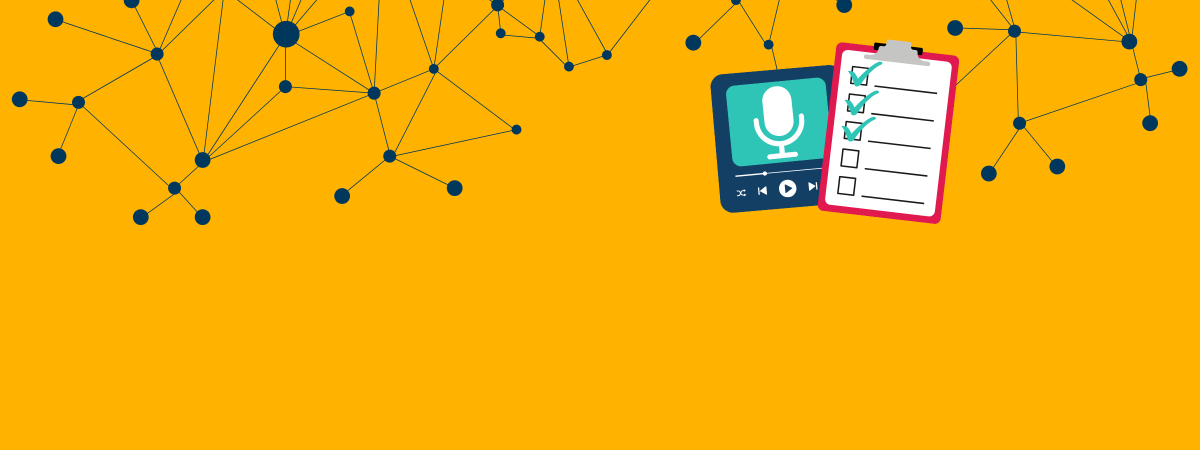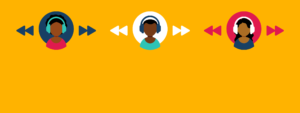Paul Riismandel
Almost a decade ago, I was there when brand lift changed the podcast ads game for the network where I worked. Offering scalable measurement for upper- and mid-funnel metrics flung open the doors to blue-chip, household name brands that previously were waiting outside. And they walked in with their investments. But we had to had to be ready for that critical moment. Is your podcast or network ready?
Since then, I’ve seen how offering brand lift measurement has helped open these doors for more podcasts and networks. Every opening started with that first study, and it’s not always a straightforward path. I’ve seen it play out in a number of ways. Let’s see if you recognize any of these scenarios.
Scenario 1: The Straightforward Ask
In this common scenario a sales team gets a direct inquiry from a buyer or brand about brand lift, or receives a RFP that says brand lift is required. As an ad seller, it’s always better to know what a buyer needs. The challenge is, are you ready with a brand lift strategy in time to meet that tight RFP deadline?
Scenario 2: The Chicken-and-Egg
Other times it’s kind of a chicken-and-egg situation. The brand or agency is asking indirect questions about measurement, yet they don’t seem satisfied with your options. They might mention specific metrics like awareness, without directly asking for brand lift. The problem is they know what they want to learn, but don’t know how to ask for it. Can you identify the signs?
Scenario 3: The Unknown Unknown
Believe it or not, even today some brands and agencies aren’t even aware that they can measure brand lift for podcasts. So they don’t even think to bring it up. And for you it’s an unknown unknown – it’s hard to give them what they want when you’re not aware they want it. The downfall is that knowledge gap is either limiting the size of their investments, or keeping them out of podcasting altogether. Are you ready to be proactive, and help them see the light?
For any of these scenarios it’s critical to be sure your podcast or network has a plan for measuring brand lift before you need it.
Step One: Educate Yourself about What Brand Lift Measures
The more you know about brand lift, the better you can help your clients who need it. This means understanding what brand lift measures, and how that upper- and mid-funnel measurement differs from the lower-funnel metrics you get with attribution.
This will help you see the signs that an advertiser wants or needs brand lift, even if they haven’t used those exact words. When you hear things like, “awareness,” “favorability,” or “purchase intent,” you’ll immediately recognize that brand lift is the solution.
Step Two: Understand Brand Lift Methods and How They Fit Your Campaigns
There are several different brand lift methods, and the choice depends on the size and type of campaign you’re selling. Does it have DAI ads, baked-in ads, presenting sponsorships, branded segments, bonus episodes, or video? All of these can be measured, but some methods are more appropriate than others. Having your research recommendation ready for the client instills confidence that you know your ad products and are ready to prove them out.
Step Three: Find Your Measurement Partners
If you’re offering attribution to your ad clients you likely have a set of vendors you turn to regularly, and maybe even a preferred partner. Same goes for brand lift.
Some buyers have a preference, and they want to see that you can support it. Often, however, they’re looking for your guidance, which is also an advantage for you. Do your marketplace research to learn what options are available (I know at least one 😉), what they can measure, and what their terms and turnarounds are. Ideally you have at least one partner that can measure every kind of ad and integration you sell and is ready with a quick quote.
Step Four: Be Proactive
Don’t wait for the brand lift question – get ahead of the game. If you don’t have a measurement section in your pitch deck, it’s time to add it. If you already have one, it’s time to add brand lift.
Step Five: Be Strategic
Brand lift results are more than just report cards to satisfy agencies and brands, they are case studies demonstrating proof of performance, and they deserve a place in your pitch decks and sales collateral. When I was running research for a podcast network, when we first assembled a critical mass of completed studies I compiled the results into benchmarks to help set expectations with our advertiser clients, and show that any single study wasn’t a fluke.
Back to the chicken-and-egg scenario – why wait for a client to request a brand lift study? Let’s say you’ve booked a high value campaign, but either the measurement question never comes up, the advertiser says they’re running their own measurement, or they just don’t want it.
It pays to think ahead by booking your own “shadow study,” which also gives you more control over the research, and the narrative. If the advertiser wasn’t expecting measurement, then they’ll be pleasantly surprised when they see your forethought as you present results during the campaign wrap.
What if the advertiser ran their own research? Then you have access to your own study where you can dig much more deeply into the stats. It’s a kind of insurance that let’s you better explain why and how a campaign performed, backed up by a trusted third party.
Taking the initiative also offers efficiencies. At Signal Hill Insights we offer multi-sponsor methods that let you pick a few brand campaigns that you’d like to test and we can combine efficiently them into one study. This gives you outcomes for each brand for less than running separate studies for each.
Need help getting your podcast and network ready for brand lift? Drop us a line, we’re happy to assist.




